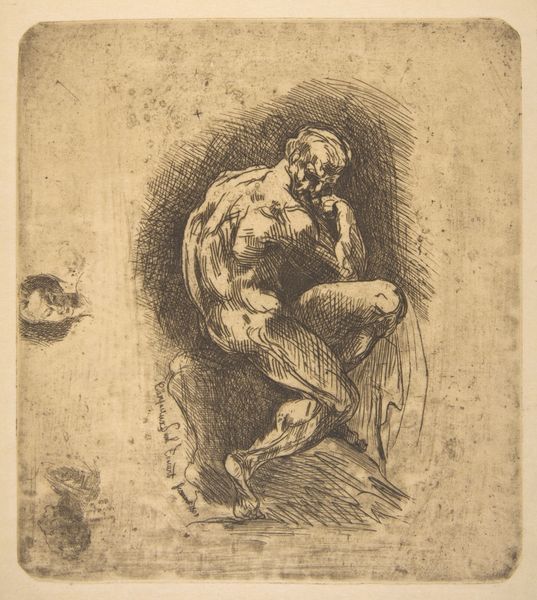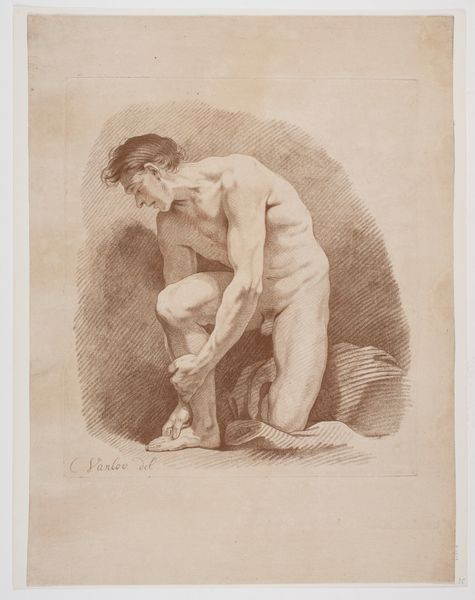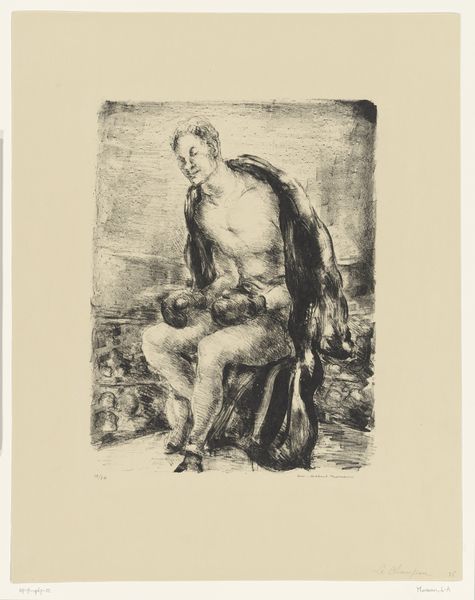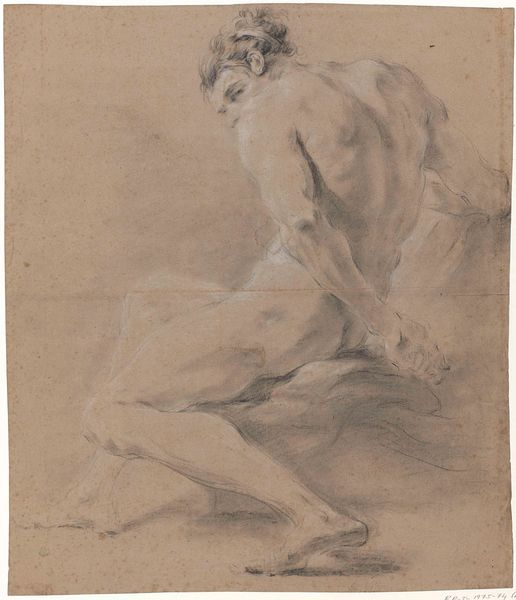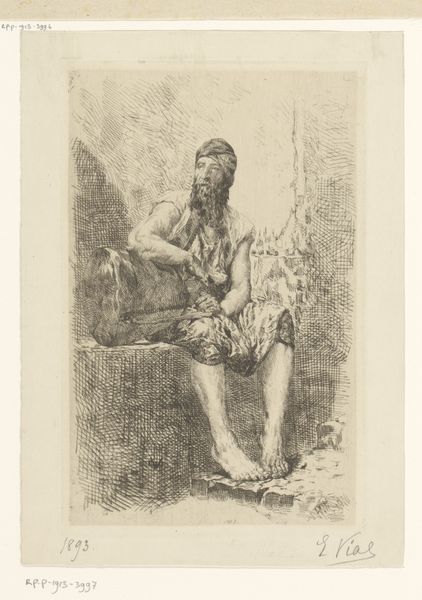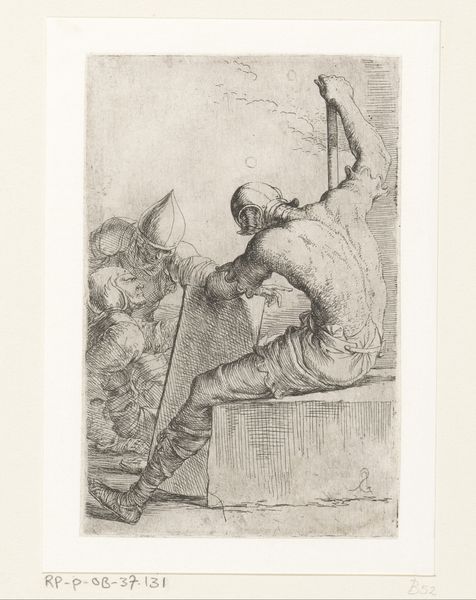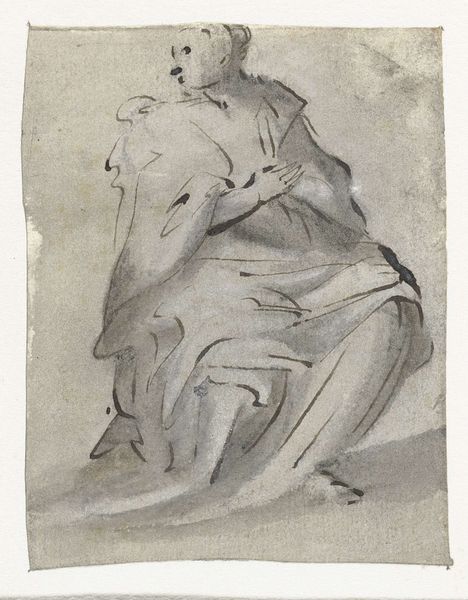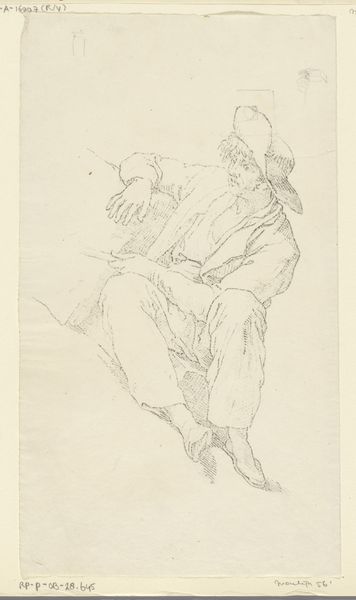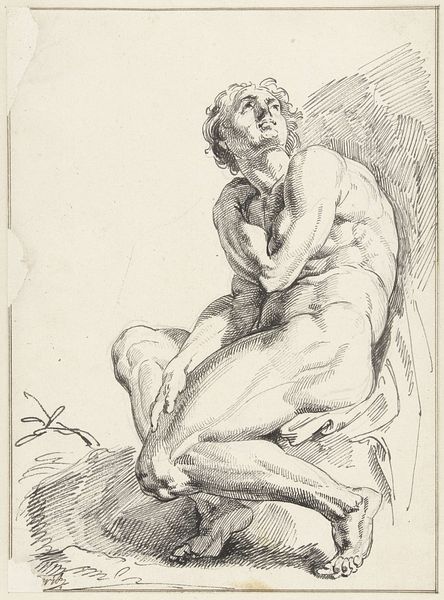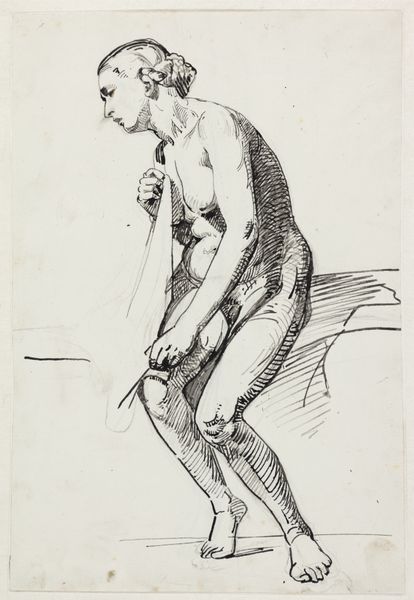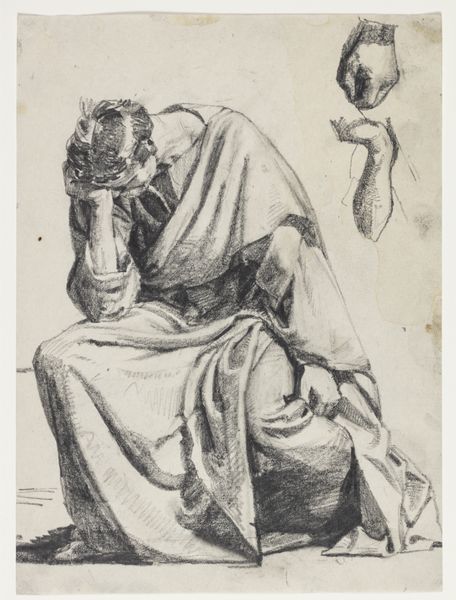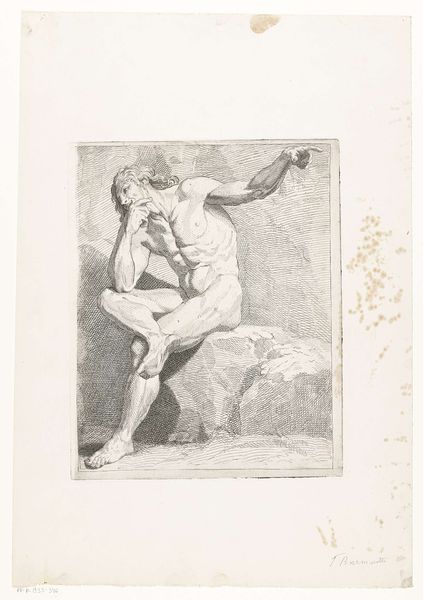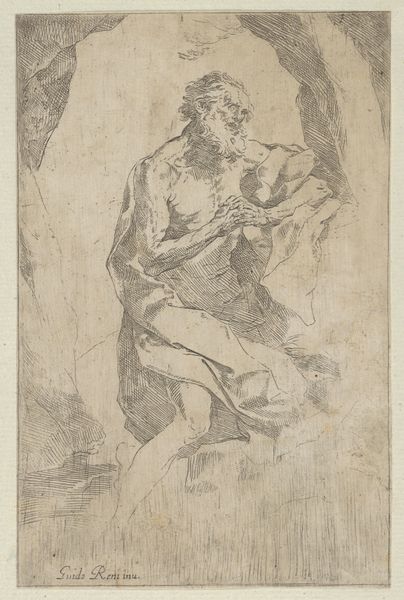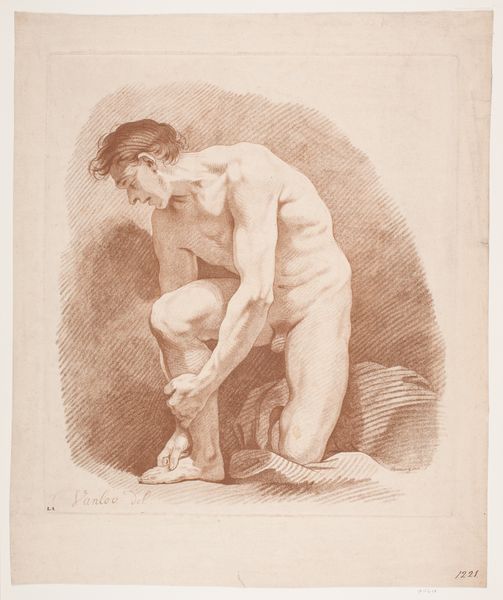
drawing, ink
#
drawing
#
baroque
#
figuration
#
ink
#
genre-painting
Dimensions: height 269 mm, width 203 mm
Copyright: Rijks Museum: Open Domain
Editor: This drawing, "Pan," made with ink after 1660 by Salvator Rosa, depicts a satyr-like figure amidst foliage. It's quite striking – the details in the figure’s musculature and the texture of the fur create a compelling sense of realism, yet the subject is inherently fantastical. How do you interpret this work in terms of its cultural and historical significance? Curator: This is fascinating, isn't it? Rosa’s Pan allows us to examine the construction of masculinity and its intersection with nature and classical mythology in the Baroque period. The figure of Pan, typically a symbol of untamed nature and masculine virility, here seems almost contemplative, seated among grape vines – hinting at Bacchic revelry, but with a notable restraint. Considering Rosa’s own rebellious artistic persona, do you think he's making a commentary on the societal expectations placed upon men? Perhaps showing the inherent conflict between 'civilized' society and more base instincts? Editor: That’s interesting! So, by depicting Pan in this almost thoughtful state, is Rosa challenging the prevailing view of masculinity during that era? Almost like he’s advocating for a redefinition? Curator: Precisely! By associating Pan, a traditionally libertine figure, with introspection and artistic creativity through his pipes, Rosa seems to reclaim agency and autonomy. And, we can also see the tensions arising from the prevailing social hierarchy when interpreting mythological narratives. Is this Pan an embodiment of the noble savage? Or a warning against succumbing to 'irrational' impulses that were often projected on the marginalized in the 17th Century? How does this drawing invite us to reconsider power structures? Editor: I see, so it's not just a depiction of a mythological figure, but a commentary on gender, society, and power during the Baroque period, and potentially an artist’s own position within that structure. Curator: Exactly. The layering of identities makes us consider not only Rosa’s intent but how we project meaning and value onto art—particularly in relation to societal pressures of that period. The piece shows just how intertwined art is with broader socio-political dynamics. Editor: That's incredibly insightful, I definitely see the work differently now, thank you!
Comments
No comments
Be the first to comment and join the conversation on the ultimate creative platform.
